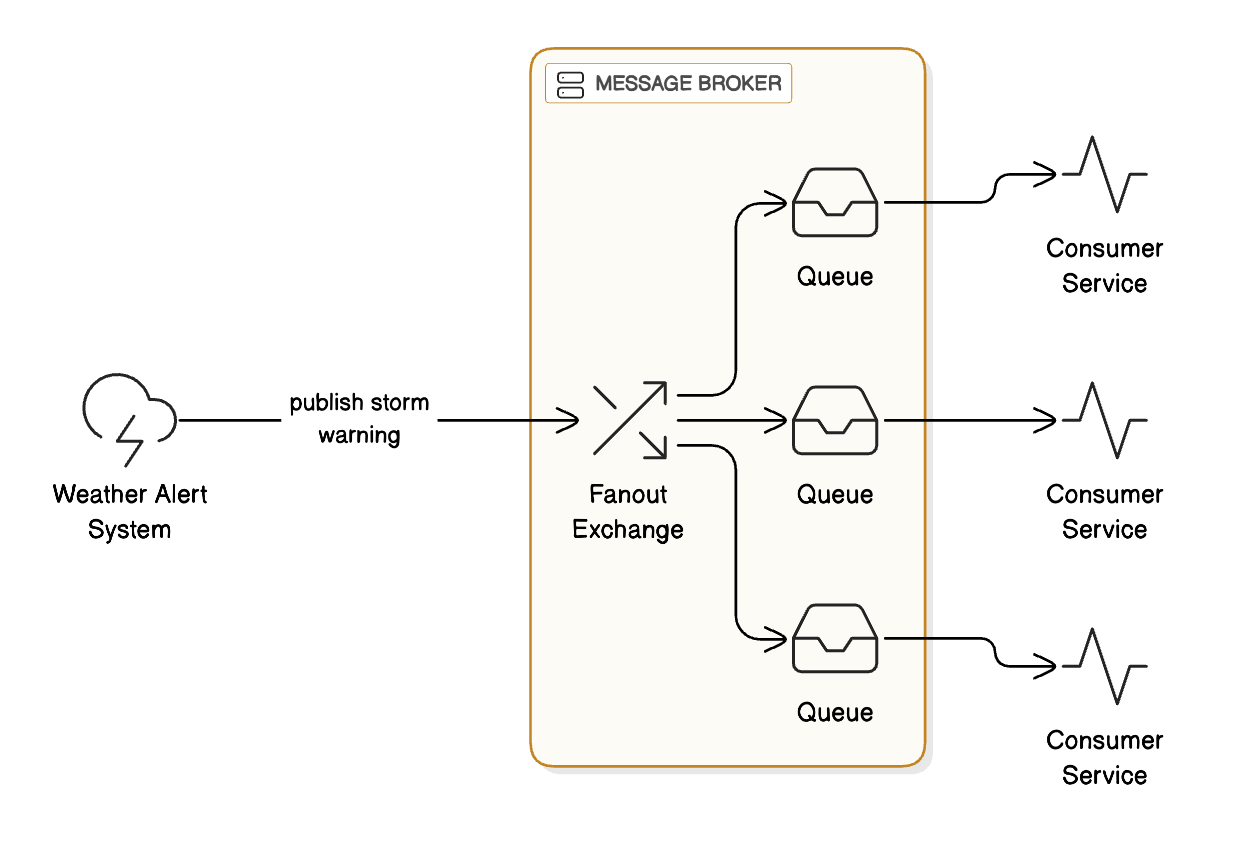A Quick Guide to RabbitMQ
How does it work?
Modern applications often need to talk to each other. For example, a shopping app might need to send order details to a billing service, which then sends information to a shipping service. If all these services were directly connected, things would quickly become complicated, brittle, and hard to scale.
That’s where RabbitMQ comes in.
RabbitMQ is a message broker: a middleman that helps different applications communicate by sending and receiving messages. Instead of one service calling another directly, it drops a message into RabbitMQ, and RabbitMQ makes sure the right service eventually gets it.
This approach makes systems more scalable, reliable, and efficient, especially when dealing with lots of data or when tasks don’t need to happen instantly. Here’s how RabbitMQ works:
Step 1: Producers Send Messages
The process begins with a producer. Think of a producer as the sender of a letter. This producer could be any application or service—for example, an e-commerce website that needs to process a new order.
Instead of directly calling the billing system, the producer sends a message (containing order details) to RabbitMQ. RabbitMQ will take care of the rest.
Step 2: Messages Enter an Exchange
Inside RabbitMQ, the message doesn’t go straight into a queue. First, it arrives at an exchange.
An exchange acts like a smart post office. Its job is to decide: Where should this message go? Which queue should receive it?
RabbitMQ supports different types of exchanges, and each has its own routing logic:
Direct Exchange – Sends the message to a queue that matches the routing key exactly.
Topic Exchange – Uses patterns (like wildcards) to send messages to one or more matching queues.
Fanout Exchange – Broadcasts the message to all queues bound to it, ignoring routing keys.
Step 3: Bindings Connect Exchanges and Queues
To connect the dots, RabbitMQ uses bindings.
A binding is like a set of delivery rules. It tells the exchange how to send messages to queues. For example, a binding might say: “If the routing key is order.new, put it in Queue 1.”
This way, producers don’t need to know which queue should receive the message. They just send it to the exchange, and RabbitMQ uses the bindings to handle the routing.
Step 4: Messages Land in Queues
Once routed, the message sits in a queue. A queue is like a waiting room. Messages stay there until a consumer (another application or service) is ready to pick them up.
Queues are powerful because they decouple services. The producer doesn’t care how fast the consumer is working, or even if it’s currently online. Messages just pile up in the queue until the consumer is ready to process them.
This makes systems more fault-tolerant: if one part fails temporarily, messages aren’t lost.
Step 5: Consumers Process Messages
Finally, a consumer takes the message from the queue and processes it.
In our shopping example, the billing service could be the consumer. It receives the message, processes the payment, and then maybe sends another message to a shipping service via RabbitMQ.
Because RabbitMQ manages the queues, multiple consumers can work in parallel, which improves scalability. If the system is getting a flood of orders, you can simply add more consumers to handle the load.
Example: Direct vs. Topic vs. Fanout
To make things clearer, let’s walk through an example:
Direct Exchange: A stock price service sends a message with the key “AAPL.” Only the queue listening for “AAPL” gets the message.
Topic Exchange: A news service publishes a message with the key “sports.football.europe.” Queues listening for “sports..europe” or “sports.football.” both receive the message.
Fanout Exchange: A weather alert system sends a storm warning. Every queue connected to this exchange gets the message, no matter what.
Why RabbitMQ Matters
So why is RabbitMQ so widely used? Here are a few reasons:
Decoupling – Services don’t have to know about each other; they just talk through RabbitMQ.
Scalability – You can add more consumers to handle heavier loads.
Reliability – If a service is down, messages aren’t lost—they wait in the queue.
Flexibility – Different exchange types let you route messages in exactly the way you need.
So, have you used RabbitMQ?
Shoutout
Here are some interesting articles that I read this week:
Requirements: the foundation of good system design by Franco Fernando
Prompt Engineering vs Spec Engineering. Coding with AI like a Senior Engineer in Big Tech by Fran Soto
That’s it for today!
Enjoyed this issue of the newsletter?
Share with your friends and colleagues.




Thanks for sharing 'A Quick Guide to RabbitMQ'.
I haven't had a chance to dive in yet, but I'm looking forward to reading it. Will definitely share my thoughts and feedback once I've gone through it.
Appreciate the effort you put into creating this resource.
I think we should also include Dead Letter Queue as part of this article. But overall it's great article.